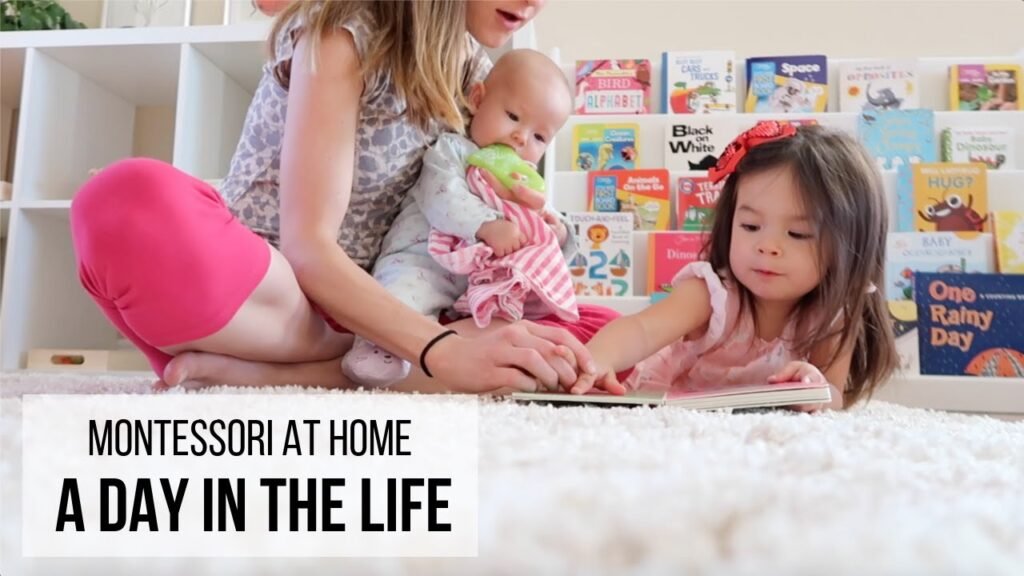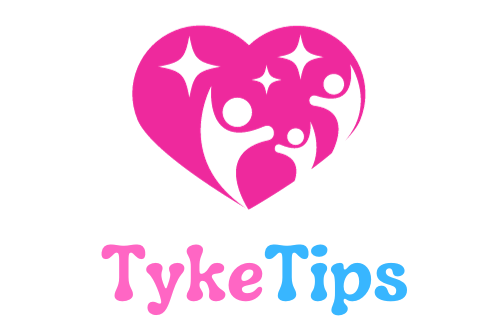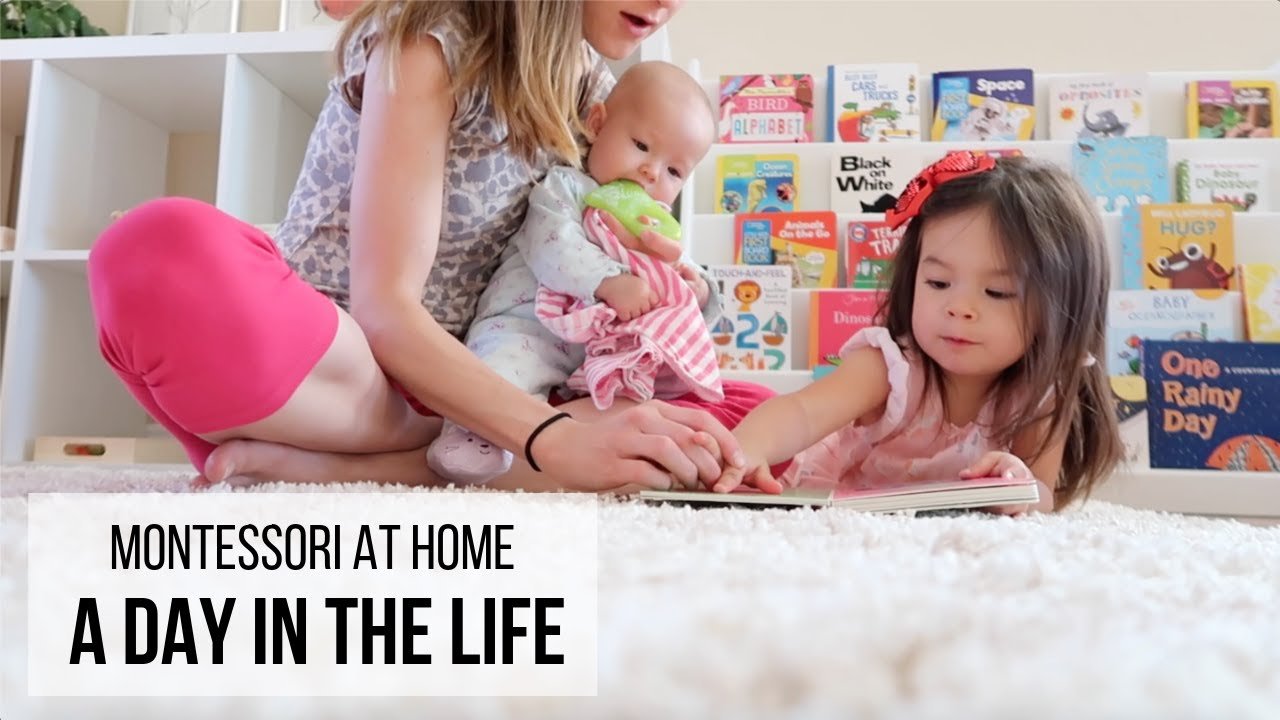Hey there! My name is Ashley, and I’m a mom of two little girls. In this video by Hapa Family, you’ll get a glimpse into a day in the life of a Montessori home with a baby and a toddler. From morning wake-up to bedtime, follow along as we share our daily routines and rhythms with you.
Join us as we explore the natural flow of our Montessori home, where our daughter Kylie takes the lead in selecting her activities. From library trips to practical life skills, we believe in following the child’s interests and fostering independence. So come along with us and experience a day in our lives filled with love, learning, and laughter.

Morning Routine
Starting your day with a morning routine sets the tone for the rest of the day. When you wake up, take a moment to stretch and take a deep breath. Getting your body moving can help wake you up and prepare you for the day ahead. After you have woken up, it’s time to start preparing breakfast. A healthy and nutritious breakfast can provide you with the energy you need to tackle the day ahead. Take your time to enjoy your breakfast and fuel your body for the activities to come. Once you have had breakfast, you can start self-selecting activities for the day. This can involve tasks, hobbies, or leisure activities that you enjoy doing.
Practical Life Activities
Participating in practical life activities can help you feel productive and accomplished. By helping around the house and assisting with chores, you contribute to the smooth running of your household. These activities can also teach you valuable life skills and foster a sense of independence. By participating in daily tasks, you learn the importance of responsibility and teamwork. Embracing practical life activities can lead to a sense of fulfillment and satisfaction in knowing that you are making a positive impact on your environment.
Montessori Philosophy
The Montessori philosophy focuses on encouraging independence and following the child’s lead. By promoting independence, children are empowered to make choices and take ownership of their actions. Following the child’s lead involves observing their interests and facilitating their learning based on their natural curiosity. Avoiding over-scheduling allows children the freedom to explore and learn at their own pace. Embracing the Montessori philosophy can nurture a child’s intrinsic motivation and love for learning.
Library Trip
A weekly outing to the library can be a fun and enriching experience. It promotes literacy by exposing children to a wide range of books and resources. Exploring new books can spark curiosity and imagination, fostering a love for reading. Library trips provide an opportunity for children to choose books that interest them, encouraging autonomy and self-directed learning. Engaging in regular library outings can instill a lifelong love for reading and learning.
Toddler-Led Day
Allowing your child to lead the day’s activities can promote a sense of autonomy and independence. By giving your child the freedom to choose activities, they learn to make decisions and explore their interests. Providing freedom within limits establishes boundaries while still allowing for personal choice. Supporting your child’s natural interests and passions can cultivate a sense of curiosity and self-motivation. A toddler-led day can foster a positive relationship with learning and encourage self-discovery.
Playtime and Exploration
Engaging in free play allows for unstructured and imaginative activities. Exploring the environment can stimulate curiosity and creativity. By discovering new things through play, children develop problem-solving skills and enhance their cognitive abilities. Playtime is essential for social development and building relationships with peers. Encouraging play and exploration can nurture a child’s sense of wonder and discovery.
Naptime Routine
Preparing for naptime involves creating a calm and soothing environment. Establishing sleep cues, such as dimming the lights or playing soft music, can signal the body that it’s time to rest. Creating a peaceful sleep environment can help promote relaxation and quality sleep. Following a consistent naptime routine can help regulate sleep patterns and ensure restful naps. Naptime is essential for children’s growth and development, allowing their bodies and minds to recharge.
Mealtime
Mealtime provides an opportunity for family bonding and connection. By involving your child in lunch preparation, you can teach them about healthy eating habits and nutrition. Family mealtimes offer a chance to share stories, laughter, and meaningful conversations. Encouraging healthy eating habits from a young age can set the foundation for a lifetime of good nutrition. Mealtime is not just about nourishing the body but also nourishing the soul through shared experiences and connections.
Evening Activities
As the day winds down, it’s essential to have a wind-down period to relax and prepare for bedtime. Establishing a bedtime routine can signal to your body that it’s time to rest. Reading a bedtime story can be a calming and enjoyable activity that promotes literacy and bonding. A bedtime routine can help children transition from wakefulness to sleep, ensuring a peaceful and restful night’s rest. Creating a soothing and comforting environment can help children feel safe and secure as they drift off to sleep.
Conclusion
Reflecting on the day allows you to appreciate the moments and experiences shared with your child. Emphasizing Montessori values, such as independence, curiosity, and self-directed learning, can guide your parenting approach. Encouraging viewer interaction opens up opportunities for sharing insights, tips, and experiences with other parents. By embracing the Montessori philosophy and incorporating its principles into your daily life, you can create a nurturing and stimulating environment for your child’s growth and development. Join us on this journey of learning, discovery, and joyful parenting.

